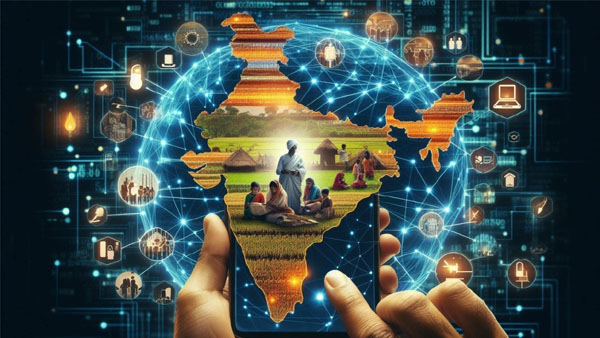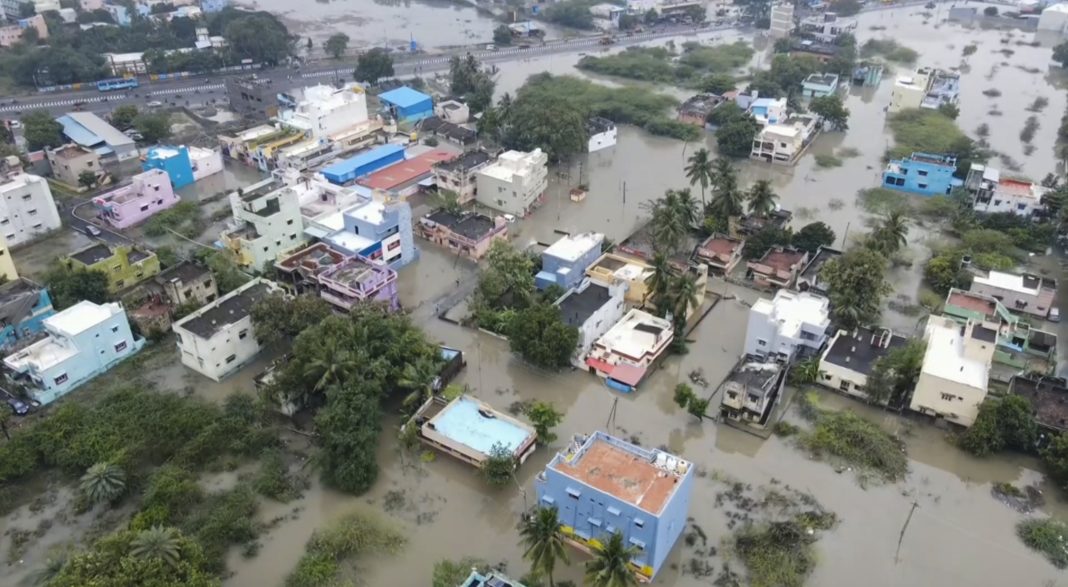By Dipak Kurmi
A decade ago, in July 2015, India embarked on an ambitious journey into the uncharted territories of digital governance and economic transformation. The launch of the Digital India mission marked not just a policy shift but a leap of faith in the technological potential of over a billion citizens. At the time, skeptics questioned the feasibility of digitizing a country as vast, diverse, and infrastructurally challenged as India. Today, those doubts have been resoundingly silenced. As India celebrates 10 years of Digital India in 2025, the nation stands as a global digital powerhouse, admired and emulated by countries across the world.
The early 2010s painted a stark picture of digital inequality and infrastructural bottlenecks. Internet penetration stood at a modest 25 crore connections in 2014, and digital literacy was confined to urban pockets. Access to government services remained largely paper-based, fragmented, and inaccessible to millions living in rural and remote regions. It was against this backdrop that the Digital India mission was born—guided by a vision to democratize access to information, technology, and governance.
The results have been transformative and far-reaching. Internet connectivity, once a privilege of the few, has now become the lifeblood of Indian governance, education, commerce, and social welfare. The number of internet connections in the country has surged to over 97 crore as of 2025. This growth has been underpinned by an extraordinary expansion of optical fiber infrastructure—over 42 lakh kilometers of Optical Fibre Cable (OFC) have been laid across the nation. To put this into perspective, this length is equivalent to 11 times the distance between the Earth and the Moon, connecting even the remotest villages in Ladakh, Siachen, and Galwan.
India’s 5G rollout stands as another technological milestone. With over 4.81 lakh base stations installed within just two years, the speed and scale of this deployment rank among the fastest globally. This rapid rollout ensures that high-speed internet now reaches both urban hubs and strategic military locations, reinforcing both national security and socio-economic development.
At the heart of this digital transformation lies the India Stack—a comprehensive, interoperable set of digital platforms that serve as the backbone of India’s digital public infrastructure (DPI). The Unified Payments Interface (UPI), one of the most celebrated elements of this stack, has revolutionized digital payments in India. With more than 100 billion transactions annually, UPI now accounts for nearly half of all real-time digital payments globally. Its simplicity and reach have empowered street vendors, small businesses, and rural entrepreneurs, integrating them seamlessly into the digital economy.
DigiLocker, another pillar of the India Stack, now serves over 54 crore users and hosts more than 775 crore digital documents. It has fundamentally altered the way citizens store, access, and submit essential documents, removing layers of bureaucracy and ensuring data security.
Aadhaar, with its near-universal coverage, has emerged as the cornerstone of digital identity in India. This biometric-based authentication system facilitates access to a wide array of government services, from subsidies to scholarships, with unprecedented efficiency.
The Direct Benefit Transfer (DBT) mechanism represents another revolutionary success. Through DBT, the government has transferred more than ₹44 lakh crore directly into the bank accounts of citizens, eliminating intermediaries and corruption-prone channels. This system has saved the exchequer an astounding ₹3.48 lakh crore in leakages, setting a global benchmark for welfare delivery.
The SVAMITVA (Survey of Villages and Mapping with Improvised Technology in Village Areas) scheme further extends Digital India’s empowerment agenda. By issuing over 2.4 crore property cards and mapping 6.47 lakh villages, SVAMITVA has ended years of land ownership uncertainty for millions, providing legal property rights to rural citizens for the first time.
Beyond governance and welfare, Digital India has profoundly altered India’s economic ecosystem, especially for Micro, Small, and Medium Enterprises (MSMEs) and artisans. The Open Network for Digital Commerce (ONDC) is a pioneering platform that democratizes digital retail by connecting small businesses to buyers nationwide. With over 200 million transactions recorded—half of them in just the last six months—ONDC is breaking the stranglehold of digital monopolies and providing unprecedented market access to marginalized entrepreneurs.
Banarasi weavers, bamboo artisans in Nagaland, and thousands of small sellers across the country are now connecting directly with consumers, bypassing middlemen and expanding their businesses. Similarly, the Government E-Marketplace (GeM) has become a game-changer in government procurement. In just 50 days, GeM crossed ₹1 lakh crore in Gross Merchandise Value (GMV). With over 22 lakh registered sellers, including 1.8 lakh women-led MSMEs, GeM empowers small enterprises to supply goods and services to government departments and institutions. Women entrepreneurs alone have fulfilled orders worth ₹46,000 crore, demonstrating the platform’s role in driving gender-inclusive economic growth.
India’s success in building Digital Public Infrastructure (DPI) is now attracting global attention. From Aadhaar and UPI to CoWIN and DigiLocker, India’s DPI model is being studied and adopted worldwide. The CoWIN platform played a pivotal role in managing the world’s largest COVID-19 vaccination drive, issuing more than 220 crore QR-verifiable certificates. Its success has now inspired other countries to replicate similar digital vaccine management systems.
During its G20 Presidency in 2023, India further institutionalized its global leadership in digital governance. The launch of the Global DPI Repository and the establishment of a $25 million Social Impact Fund marked India’s commitment to helping countries across Africa and South Asia build inclusive digital ecosystems. Programs like PM-WANI (Public Wi-Fi Access Network Interface) and the One Nation One Subscription initiative continue to extend affordable digital access and services to underserved populations.
Another transformative force behind Digital India’s next phase is the country’s burgeoning startup ecosystem. India now ranks among the top three startup ecosystems globally, with over 1.8 lakh startups spanning sectors from fintech to health tech. This is more than just an entrepreneurial boom; it’s a full-fledged technology renaissance.
Artificial Intelligence (AI) has emerged as the next frontier of India’s digital mission. The $1.2 billion India AI Mission seeks to democratize access to AI tools and infrastructure. By making 34,000 graphics processing units (GPUs) available at globally unmatched prices—less than $1 per GPU hour—India has positioned itself as the world’s most affordable compute destination. This initiative complements India’s reputation as the most affordable internet economy, empowering startups, research institutions, and young innovators.
India has also championed ethical AI development on the global stage. The New Delhi Declaration on AI, introduced during the G20 Summit, underscores India’s commitment to promoting innovation with responsibility. The establishment of AI Centres of Excellence across the country is a testament to this vision, ensuring that India remains at the forefront of human-centric technological progress.
As India looks towards the next decade of digital transformation, the focus is shifting from digital governance to global digital leadership. The Digital India program is no longer a government-led mission; it has evolved into a people’s movement, woven into the daily lives of 140 crore citizens. It is central to the larger goal of building an Aatmanirbhar Bharat—a self-reliant India that stands as a trusted innovation partner to the world.
The future promises even greater transformations as India continues to harness technology to solve challenges, empower citizens, and foster inclusive economic growth. Whether it’s bridging the urban-rural divide, empowering women entrepreneurs, or exporting digital governance models to the world, Digital India’s journey from 2015 to 2025 is a story of resilience, vision, and collective national determination.
To the innovators, entrepreneurs, dreamers, and everyday citizens who have shaped this decade-long digital revolution—the world is watching India for the next digital breakthrough. And if history is any guide, India will continue to lead with technology that unites, includes, and uplifts.
(the writer can be reached at dipakkurmiglpltd@gmail.com)




